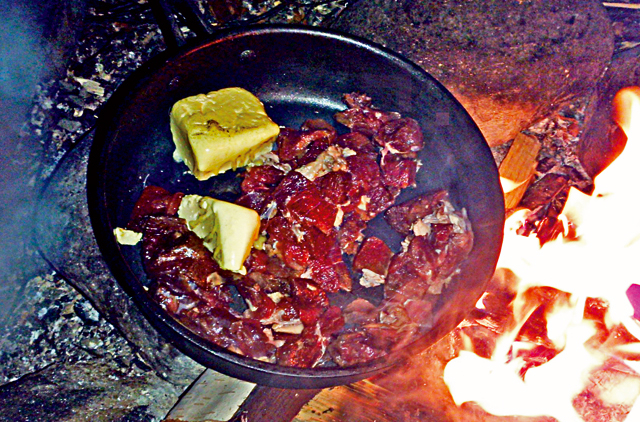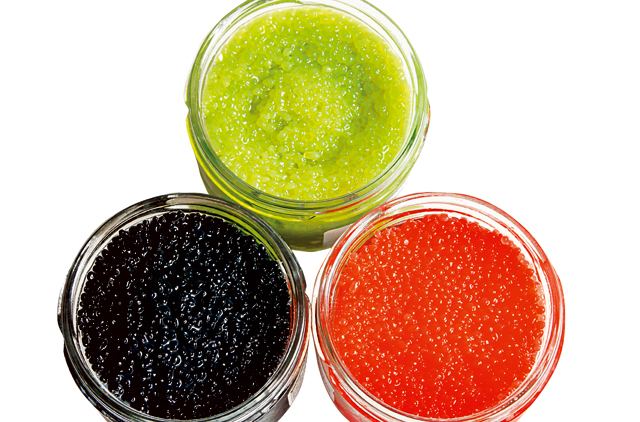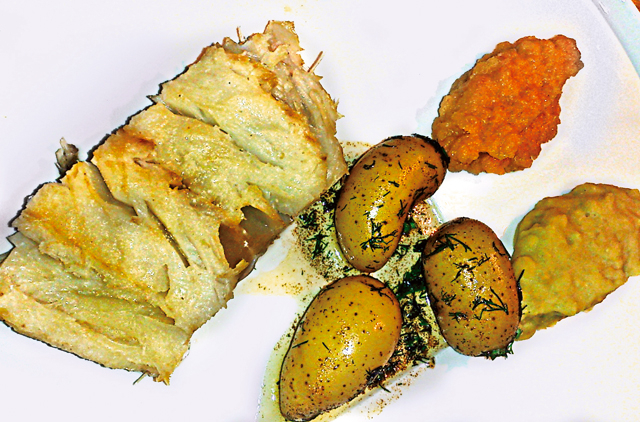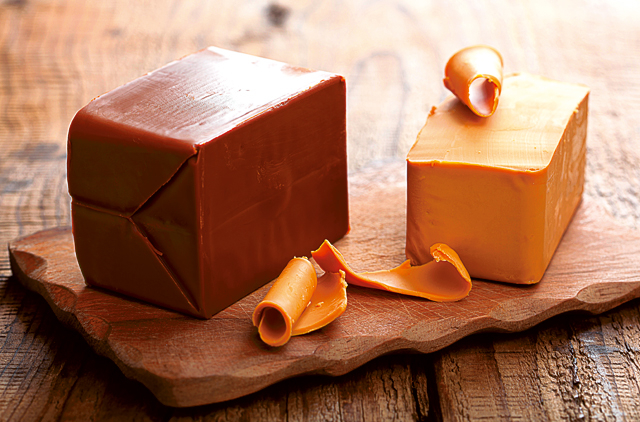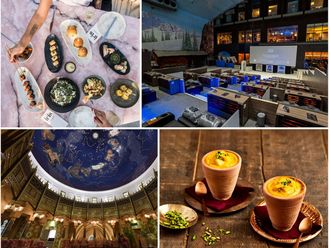
- Six impossible things at breakfast may well include half a dozen types of caviar. With the evidence laid out before my eyes in this Arctic wonderland, I asked myself, what would Alice do? I proceed to put a tiny bit of each on a plate and try them all, one after another.
Red, black, dark blue, acid green — fish roe comes in many curious colours. Each tastes only very slightly different from the others, but curiously, they’re all delicious, even with the gluten-free bread that is on all Norwegian hotel breakfast buffets.
This particular breakfast — at the Rica Ishavshotel in the northern city of Tromsø, one of the best places to see the Northern Lights — has won awards as the country’s best. People spend fortifying themselves here each morning, many also carrying away fruit, bread and yoghurt. One couple pragmatically made sandwiches every day and surreptitiously packed them in plastic bags for later.
This bad behaviour is at least partly due to the fact that Norway is expensive — particularly for tourists.
A policeman I fall into conversation with at Oslo’s central station says the high prices ensure that the country’s oil money makes its way back into the system — and that Norwegian salaries are high enough to pay these stratospheric prices.
Six-dollar water
Users on the peer-review website Tripadvisor routinely caution other travellers to budget for one of the costliest holidays of their lives. “No one in Norway can explain why it is so exhorbitant (sic),” posts Pat0046 from Louisville in the United States, and she proceeds to list the most galling: “$6 (about Dh22) for a bottle of water, $10 for a Whopper at Burger King, $50 for a fish dinner (no drink).”
Tripadvisor reviewers also concur that Norway offers unique food — and travel — experiences. Every meal here feels like something to be savoured, featuring ingredients and techniques unfamiliar to even the well travelled urban nomad, but whose use is rooted in traditions spawned by the country’s unique geography and extreme weather. Even at the top end of the market, Michelin-star restaurants such as Maaemo and Bagatelle in Oslo create menus around local, seasonal and often organic ingredients. For adventurous gourmands, tour operators such as The Mighty Fine Company in the UK will organise customised food tours across Scandinavia, featuring traditional and contemporary cooking.
Fish roe, either preserved or fresh, for example, isn’t just available in hotels; it’s on sale in food markets and is often found in homes across the country. “Smoked cod caviar is a common thing in most households in Norway. It is sold in tubes in every supermarket,” says Øyvind Bolstad, Executive Chef at the Rica Airport Hotel in Stavanager, an ancient city in the fjords of Southwest Norway. He puts salmon, catfish, lumpfish and smoked cod caviar on his menus.
Prize catch
If you don’t like seafood, don’t go to Norway. With a coastline of some 25,000 kilometres including fjords and islands, fish is at the centre of the Norwegian kitchen. Smoked salmon or gravlax is, of course, the food cliché, but you encounter all kinds of seafood here, served many different ways: fresh, smoked, pickled or marinated. My travel companion on this 10-day trip, a Dutchman who’d happily eat filet mignon every night of the week, said afterwards that he’d never eaten so much fish in his life!
He didn’t mind lutefisk too much, though, which is no wonder. Norway’s unofficial national dish reportedly originated in the Netherlands — although purists insist it was the Vikings who first hit upon the idea of treating stockfish with bicarbonate of soda to preserve it over the winter.
People are equally divided about its taste. Most can’t abide its glutinous texture and strong odour, but some love it so much, they form clubs to meet up and eat lutefisk, Bolstad says. We tried it at Fiskekompaniet, an innovative but moderately priced restaurant with fabulous views of Tromsø’s waterfront. Their version didn’t smell, nor was the aspic-like texture unpleasant. It came served with herbed potatoes, peas and mushy carrots and I wiped my plate clean. Norwegians I met looked at me in surprise when I admitted as much — apparently I’m “very brave.”
Monster crabs
An entirely different gustatory experience is Alaskan king crab, which I first encountered on the Hurtigruten coastal ferry from Tromsø to the northern port town of Kirkenes. These boats aim to deliver an experience close to those offered on cruise ships, complete with shore excursions and onboard activities. One freezing evening — we were doing the cruise just before Christmas — the boat stopped near Honningsvåg to welcome a few local fishermen with their catch.
These monster creatures, which can span two metres and weigh 15 kilograms, are native to Alaska and were introduced to the Barents Sea off northern Russia in the sixties, from where they spread to Norway. With no natural predators in Arctic waters, conservationists fear they could eat their way south to Spain and Portugal, but for now, Norway’s fisheries keep stocks to a minimum.
And people are happy to eat them. In the summer, families go on large outdoor picnics or krabbefests, where lightly cooked crabs are served with bread, mayonnaise and lemon.
Since we disembarked soon after, it seemed only fitting to book a crab safari to snag one of these brutes ourselves. Tour guide Michael, who works with the Snowhotel Kirkenes, kitted us out with winter overalls and we snowmobiled it over to the lake where his nets lay.
In the early afternoon darkness, we drilled into the thick slab of ice that had formed overnight to get at our booty. After about half an hour of solid manual labour, Michael hauled up a big square net with six or seven crabs. By now almost frozen through, but loving every minute, we jetted off to his log cabin, where he cooked the crab — one was enough for three people — for exactly 18.5 minutes.
To eat, simply cut them open with a pair of scissors to it and eat the tender meat straight from the shell. Since it’s fresh, you only need a little salt to let the almost unbelievable sweetness through.
Rudolf for dinner
There’s more to Norway than fish, but really only incidentally. For fish-haters, a natural choice is reindeer.
Rudolf’s cousins are a staple all over northern Scandinavia, particularly in the Lappish areas. It’s a lean meat that’s fairly gamey and lends itself well to steak. The Norwegians also serve it stewed with juniper berries and sour cream into a fantastic dish called finnbiff. On the Hurtigruten, we’re served reindeer stroganoff, and Xiang Long, a Chinese restaurant in the Finnish city of Rovaniemi, serves Sichuan-style reindeer (it was a revelation).
But it’s best eaten stir-fried in a block of fat. This is how Johan Isak Turi cooks it for us in his tent outside Tromsø. Turi, a guide with Tromsø Lapland, is an indigenous Sami tribal whose family has herded reindeer for generations across Scandinavia, and he reminds us that the simple pleasures are often the best.
Reindeer souvenirs are popular with tourists and smoked sandwich meat is available at Oslo airport. Be warned, though — when you plate it up at a chi-chi party, you might well be faced with horrified reactions. “Rudolf? Oh no, I can’t eat Rudolf,” one friend exclaimed here in Dubai.
Cry for elk
Elk meat is also served all over Norway, in a tradition that goes back to the Stone Age, according to New York-based food consultant and Norway native Sunny Gandara, who cites as evidence rock carvings in Alta in northern Norway. Although sweeter and tastier than reindeer, elk — or moose to the Americans — isn’t farmed as intensively, so it’s less likely to be available in restaurants.
People hunt it instead, early in the autumn. “While growing up, my parents and I would spend weekends at our cabin in the mountains and I recall my father going out with his friends hunting for elk. We always looked forward to him coming back with hopefully what would be future dinners,” Gandara writes on her blog, Arctic Grub. People freeze the game they’ve caught for eating through the winter. Elk is often eaten stewed, sautéed and in meat patties, she writes. In the winter, elk burger stands pop up at markets in downtown Oslo — and they’re cheap and tasty.
If you’re travelling around Christmas, also be sure to order pinnekjøtt, a traditional dish of salted mutton ribs that are steamed or smoked for a few hours. Birch wood is used in both processes, so the end result is a wonderful, woody flavour that pairs well with mustard and swede. The dish gets its name — literally, stick meat — from these birch sticks and not, as you might expect, from the cut of meat.
There’s a story behind each dish in this fairy-tale country and you can have a new food experience every day — if, of course, you’re willing to pay for it. As Alice might say, there’s a moral in there somewhere, if only I can find it.
Get in touch
Rica Hotels Norway: rica-hotels.com; Fiskekompaniet, Tromsø: fiskekompani.no;
Hurtigruten Coastal Ferry: hurtigruten.com; The Mighty Fine Company: mightyfine.company.com


